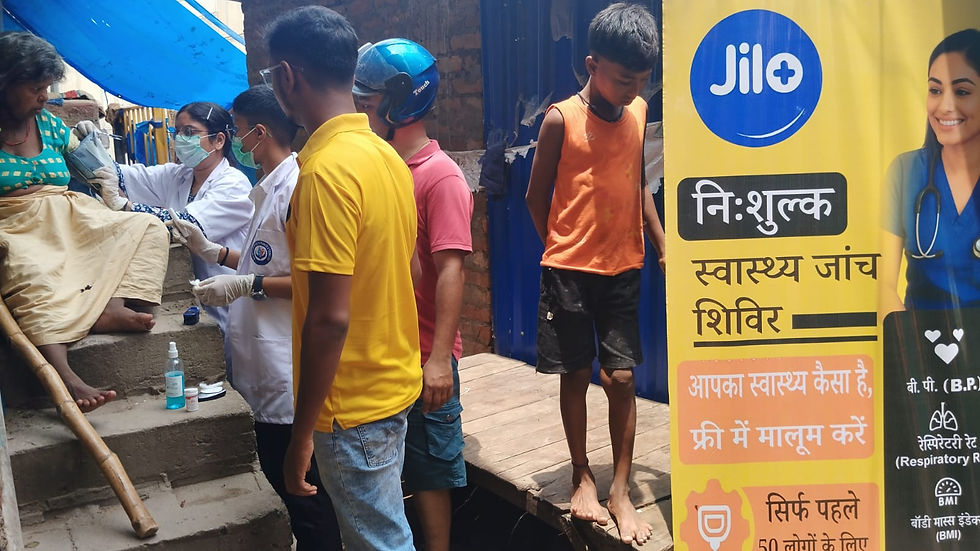What is one learning Founders must have from Zerodha’s success?
- Suman Jha
- Sep 30, 2023
- 4 min read
Every year, when Zerodha releases its financial results, the entire ecosystem buzzes with excitement, akin to the beginning of a festival. Media outlets assemble teams to craft stories, individuals perched on the fence criticize the founders within the arena, offering their armchair advice on how to play the game. Investors diligently calculate valuations, while other members of the ecosystem enthusiastically reshare and strive to be part of this festival. Amidst this jubilant celebration, one often fails to take a closer look at the elements that led Zerodha to achieve this remarkable success in a relatively short span of time. Indeed, not many seem interested in unravelling the substance of this accomplishment, for it requires dedication and commitment.
Over the past few months, I have had the privilege of interacting with several members of Zerodha's team, including individuals from the technology division. Recently, I penned a note to one of Zerodha's team members. My assertion was simple: unlike most outsiders who believe Nithin's greatest achievement lies in building Zerodha, I contend that his most significant triumph is in fostering a unique team and successfully instilling shared values within them. However, the focus of this essay does not delve into that aspect; we shall reserve it for another discussion.
Even before meeting Nithin in person, I vividly remember a conversation with Sagar, one of Zerodha's team members, during which I confidently stated my ambition to build a company at least 20 times the size of what Nithin had created. I have been vocal about this aspiration since that fanboy moment. In today's India, there are just 73 companies boasting a net profit of approximately 3000 Crores, and achieving this feat in a mere 13 years highlights two crucial aspects:
They used technology beautifully on a problem in which money where already being spent
They picked that problem at a time when no one thought that was an actual problem
For me, the latter (b) is more critical than the former (a). Identifying a problem when it wasn't in vogue, when it defied prevailing trends and was generally ignored due to the dominance of incumbents, demonstrates true vision.
Upon identifying this problem, they utilized technology ingeniously to continually reduce the delivery cost and passed these savings on to consumers. I've meticulously scoured the internet for all things related to Zerodha and Nithin. I can unequivocally state that the older videos are priceless gems for aspiring founders looking to build substantial-tech businesses in India. In many of these videos, Nithin emphasized the idea that the key differentiator wasn't the flat INR 20 charge, which could be easily replicated by competitors over time, but the use of technology to drive down costs and benefit customers.
The concept of using technology to lower costs is conspicuously absent from the current ecosystem. I genuinely struggle to comprehend why a tech company would offer the same services at 5 to 10 times the cost when, fundamentally, technology should lead to some form of productivity enhancement and, consequently, a lower product price. There was a time when I believed that the sole purpose of technology was to reduce delivery costs, but I was mistaken. Technology can also be employed to enhance convenience. In such cases, startups can argue for inflation in the final product price. However, expecting people in a country like India, which is akin to China in 1998, to pay for convenience is a challenging proposition. This is a significant reason why most available products are accessible only to the top 2% to 5% of Indians.
If I were to distil one lesson from Zerodha, it would be to leverage technology to deflate product prices and pass those benefits on to consumers. Over time, this approach can set in motion a massive flywheel. The key is to select a problem that isn't glamorous.
This realization did not come to me from day one. I've attempted and failed to launch numerous startups in the past. It appears that the universe has destined me to make healthcare affordable for the 1.2 billion people of India. Today, this goal is attainable thanks to the available technology, and our mission is to provide quality healthcare that's affordable for this large population. This is a consumer base that has largely been overlooked, lacks glamour, and relies heavily on offline spending. However, technology can work its magic and potentially have an enormous impact on the lives of 1.2 billion Indians.
This is one of the reasons why we have been pursuing Rainmatter. You probably saw that coming, didn't you? Besides my aspirations to be part of the Zerodha team and gain access to remarkable, aligned portfolio companies, I believe we are at a similar initial stage as Zerodha. The only difference, perhaps, is that I believe our thought processes are equally clear, and maybe, just maybe, I am a bit more evolved (from an age perspective) than Nithin, though that is a subjective claim :)
In conclusion, in India, the focus on utilizing technology to reduce the cost of addressing unglamorous problems may lead to extraordinary returns and unlock trillions of dollars in value for the ecosystem.
That was a quick thoughts collection exercise. Thanks for reading, If you find this essay interesting, please share this in your network.
I shall see you all next week :)

